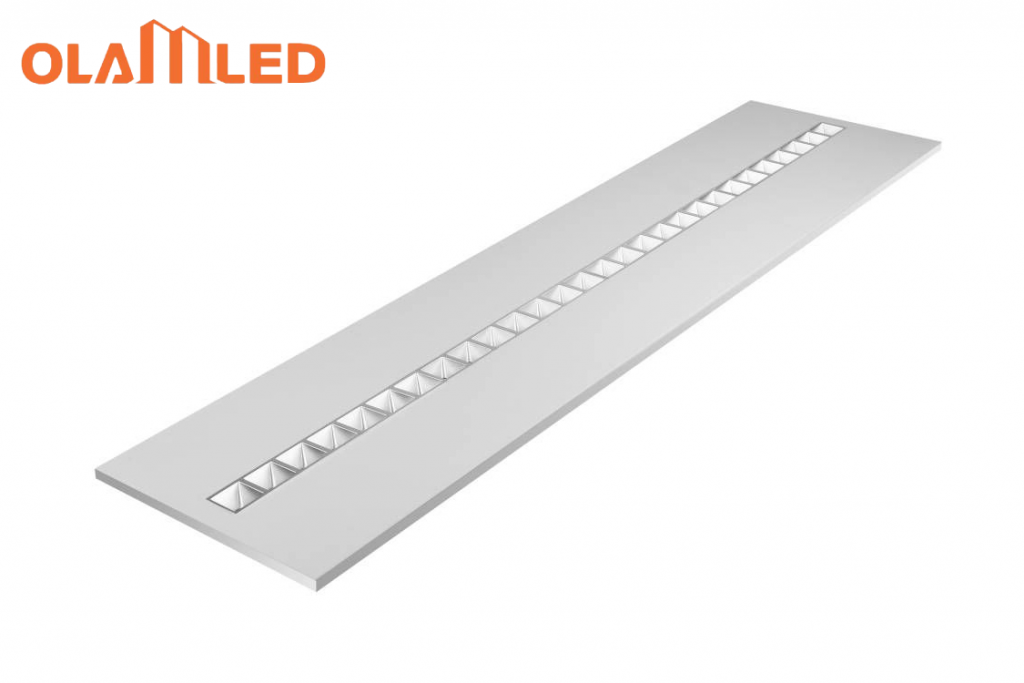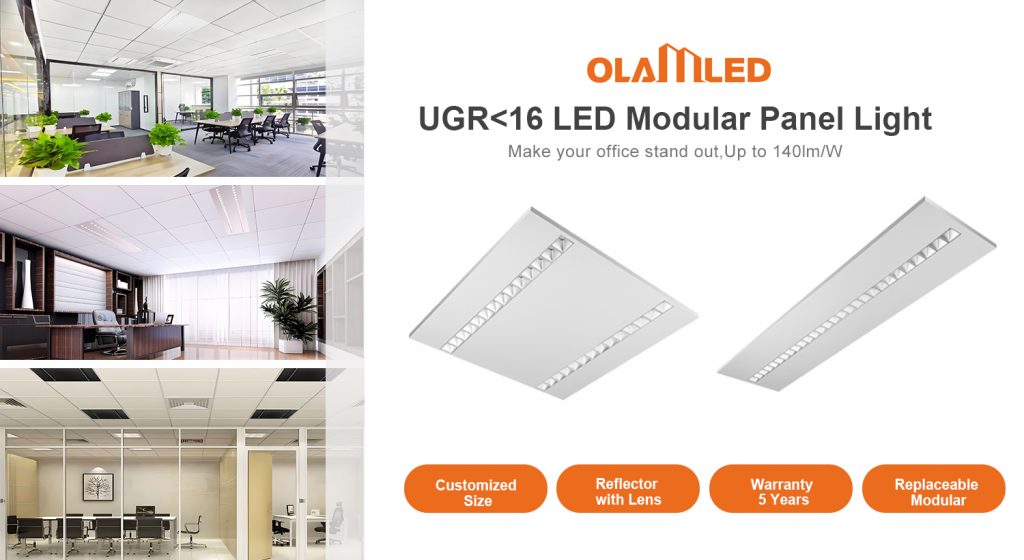What Is Glare in Lighting?
Glare is when light is too bright or uneven, making it hard to see and causing discomfort. It takes two forms. Direct glare comes straight from a light source that lacks shields or diffusers. Reflected glare bounces off shiny desks, screens, or floors.
In a modern office, staff might struggle with bright overhead fixtures that create hotspots on their monitors. Older adults or people with eye conditions notice glare sooner because their pupils adjust more slowly to changes in brightness .
How Does Glare Affect Vision?
When glare hits the eye, it forces pupils to shrink quickly and blink more often. These rapid adjustments tire the eye muscles and blur details. For example, stepping from a dim hallway into a sunlit lobby can leave someone momentarily dazed.
Drivers report that oncoming headlights at night leave trails of light that last seconds, increasing their accident risk by around 30% . Simple solutions include anti‑reflective screen filters or adjusting the angle of task lights to reduce hotspots.
What Are the Types of Glare?
Understanding the glare type helps pick the right control method:
| Type | Description | Common Settings |
|---|---|---|
| Discomfort Glare | Causes unease but does not block vision. | Offices, living rooms |
| Disability Glare | Scatters light inside the eye. Lowers contrast and detail. | Retail stores, showrooms |
| Veiling Glare | Overlays a uniform brightness that mutes surface details. | Outdoor patios, parks |
| Adaptation Glare | Causes temporary disorientation between light zones. | Entrances, hallways |

What Are the Key Differences Between Glare and Anti‑Glare LED Lights?
Glare LEDs deliver tight beams that create bright spots. Anti‑glare LEDs use diffusers, prismatic lenses, or matte covers to spread light evenly across surfaces. In one office trial, workers using anti‑glare panels reported 30% less eye strain compared to standard LEDs . This shift improved focus during long data‑entry tasks.
How Does Light Distribution Differ?
Glare LEDs often beam light in a narrow 60° arc, leaving dark corners and bright patches. Anti‑glare models widen the beam to 120° or more. This broader spread covers an entire desk evenly. A university lab replaced three glare fixtures with two anti‑glare panels. The result was balanced illumination with 10% energy savings and zero dark zones.
What Is the Impact on Eye Comfort?
Because anti‑glare LEDs smooth out bright peaks, they can cut discomfort glare by up to 40%. In a hospital ward, nurses under anti‑glare lighting reported fewer headaches during overnight shifts.
They could chart patient data more accurately without squinting. Handheld light meters also showed reduced contrast ratio across the room, indicating more uniform light levels.

When Should You Use Anti‑Glare LED Lights?
Anti‑glare LEDs shine where people focus on screens or fine details for hours. They are ideal in offices, classrooms, and medical centers. In one elementary school study, students in anti‑glare lit classrooms scored 15% higher in reading comprehension tests. Teachers noted fewer complaints about eye fatigue during afternoon lessons .
In What Environments Are They Most Effective?
| Environment | Benefit | Measured Outcome |
|---|---|---|
| Corporate Offices | 20% fewer reported headaches | Employee health survey |
| Higher Education | 15% improvement in focus | Student concentration survey |
| Warehouses | 25% drop in safety incidents | Safety audit report |
What Applications Benefit from Anti‑Glare Solutions?
- Consumer Electronics: Tablets with matte screen treatments stay readable in bright sunlight.
- Automotive Dashboards: Models like the Tesla Model 3 use low‑glare displays to keep speed and navigation clear in direct sun.
- Interactive Whiteboards: Classrooms save time when teachers do not need to adjust room blinds to reduce screen sheen.
hospital radiology lab also adopted anti‑glare panels to ensure precise readings on high‑resolution monitors.

How Do You Choose Between Glare and Anti‑Glare Options?
Select lighting based on tasks, space layout, and individual needs. Art studios often use focused glare fixtures for color accuracy when paired with adjustable shields. For general work areas, anti‑glare fixtures offer sustained comfort.
What Factors Should You Consider?
- Task Requirements: Detailed work needs even illumination.
- Surface Types: Glossy floors or glass desks reflect harsh light.
- Ambient Conditions: Natural daylight levels change through the day.
- Energy Goals: Compare lumens per watt to balance light quality and power use.
How Can You Assess Your Lighting Needs?
- Conduct a Glare Survey: Note areas that trigger eye discomfort during tasks.
- Use a Light Meter: Measure lux and contrast ratios at eye level.
- Test Adjustable Fixtures: Try dimmable or tilt‑able anti‑glare panels and record comfort feedback.
- Compare Specifications: Check manufacturer data for lumen output and beam angle.
An architectural firm used this process to cut lighting complaints by half in a newly renovated co‑working space.

What Do Lighting Professionals Recommend for Glare vs. Anti‑Glare Lighting?
Experts agree that fixture placement and diffuser quality matter more than raw brightness. Layered lighting—combining ambient, task, and accent sources—keeps glare under control.
In pilot programs, offices with smart shading systems that dim LED panels in sync with daylight saw a 25% productivity uplift .
What Insights Do Experts Share?
“Effective glare control is not about darkness. It is about balanced light that supports human eyes,” explains senior lighting consultant.
Designers report that 75% of employees prefer workspaces with diffused LED ceilings over those with exposed bulbs.
Are There Case Studies on Their Effectiveness?
- Education: A middle school retrofitted classrooms with prismatic diffusers. Student engagement rose by 15%.
- Public Transit: A city bus system added anti‑glare covers to route displays. Ninety percent of riders found information clearer under bright daylight .

Glare and Anti‑Glare Lighting FAQs
Answering top questions about glare control and anti‑glare technology.
What Are Common Misconceptions About Glare and Anti‑Glare Lighting?
People often think anti‑glare LEDs remove all reflections. In truth, shiny surfaces still produce some sheen. Effectiveness depends on diffuser material and installation angle.
How Can Glare Impact Productivity in Work Environments?
Excessive glare causes fatigue and up to a 20% performance drop in tasks like data entry. Implementing anti‑glare solutions and proper window treatments can restore focus quickly .
Are There Specific Regulations Regarding Glare in Public Spaces?
Standards such as ANSI/IES RP‑28 set limits on glare for indoor work areas. California’s Title 24 bars high‑glare fixtures near homes. New York City requires shielded lighting in parks to protect nearby residents .
What Innovations Are Emerging in Anti‑Glare Lighting Technology?
Next‑gen LEDs integrate sensors that adjust beam patterns in real time. Advanced optics combine micro‑lens arrays with nano‑coatings for even higher glare suppression without lowering brightness.
How Can Homeowners Benefit from Understanding Glare?
Identifying glare sources—like south‑facing windows or glossy floors—lets you apply simple fixes. Use sheer curtains, reposition task lamps, or choose anti‑glare screen protectors. A homeowner shared that adding a matte diffuser under their kitchen cabinet lights made cooking more comfortable during evening hours.



